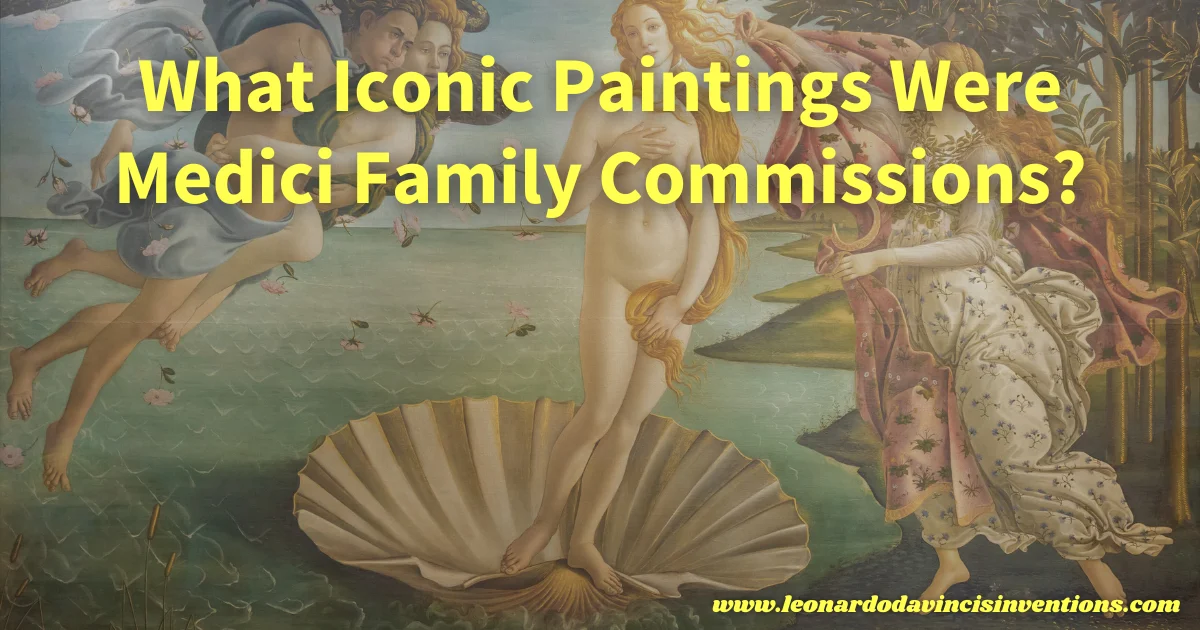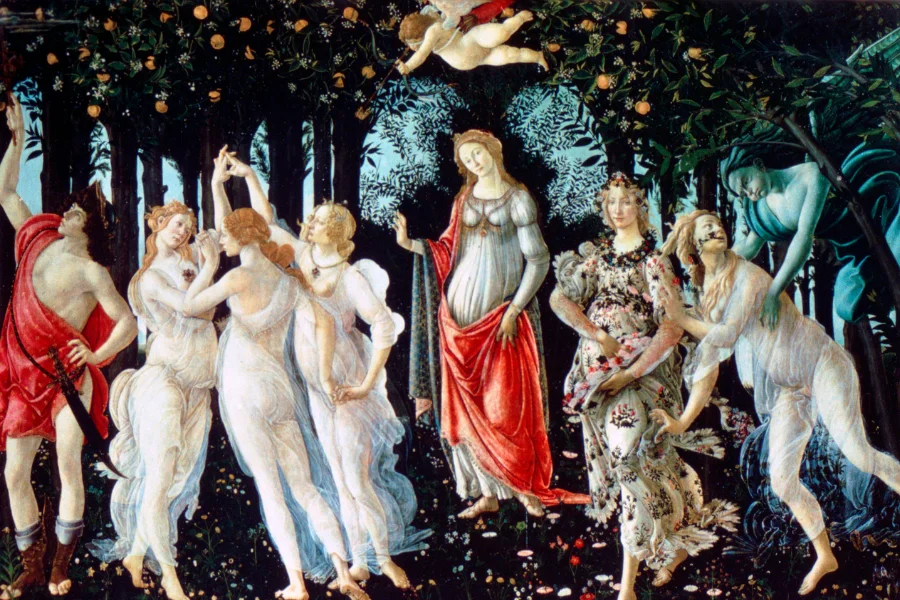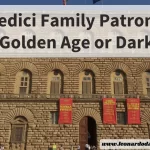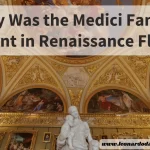
Medici family painting commissions had a profound influence on the development of Renaissance art and a lasting impact on culture.
Many want to know which iconic works came to life through the family’s support, but this information can seem overwhelming or hard to find. This article will guide you through the masterpieces created because of the Medici family and highlight the stories behind each work.
The Medici family directly commissioned or financed some of the most famous paintings ever made, such as Botticelli’s The Birth of Venus and Donatello’s David.
These works defined the Renaissance style and influenced artists and their styles for generations.
These commissions connected influential artists, such as Botticelli and Michelangelo, with the Medicis, making Florence a hub of artistic achievement.
Knowing which paintings the Medici commissioned provides valuable insight into art history and reveals the family’s enduring legacy.
The Medici Family’s Patronage and Its Impact on Renaissance Art
The Medici family commissions shaped the art and culture of Renaissance Florence. The Medici family sparked innovation by supporting talented artists and left a lasting legacy through celebrated artworks.
How the Medici Family Painting Shaped the Florence Art Scene
The Medici family had an enormous influence on Florence’s art. Their support enabled painters such as Botticelli, Leonardo da Vinci, and Michelangelo to concentrate on their creative projects, resulting in some of the most renowned masterpieces in art history.
Their commissions included both religious and secular themes. This support enabled artists to experiment with new styles and techniques, setting artistic trends in Florence.
Medici patronage played a pivotal role in the emergence of the Renaissance and the city’s rich artistic heritage.
The Role of Wealth and Power in the Medici Family Commissions
The Medici’s rise as a banking and political dynasty gave them extraordinary wealth and power. This allowed them to act as collectors and major sponsors of the arts.
With their ability to commission large-scale works, the family directed artistic talent toward projects that displayed their power, values, and emblems. They transformed their palaces and public spaces with artworks, including portraits, frescoes, and sculptures, using art to showcase both their devotion and status.
Their investment in art became a model for other noble families and fueled demand for new creativity across Florence and beyond.
Patron-Artist Relationships and the Rise of Renaissance Masterpieces
Artists benefited from close ties with Medici patrons. These relationships provided stability, resources, and opportunities to experiment with techniques and subjects.
The Medici family’s commissions inspired projects like Botticelli’s Birth of Venus, now regarded as a symbol of Florence’s artistic legacy and innovation in art.
Workshops thrived, and artisans pushed the limits of what art could show, from humanist ideas to detailed symbolism. The Medici’s support turned talented artists into legends and established Florence as a center for celebrated masterpieces throughout the Renaissance.
Iconic Medici Family Paintings and Their Legacy

Medici family painting commissions marked a turning point in art history. Their support for master artists led to a new wave of innovation, symbolism, and culture in Renaissance Florence.
Botticelli, Leonardo da Vinci, and Michelangelo: Medici-Sponsored Artists
The Medici family influenced the careers of renowned artists such as Botticelli, Leonardo da Vinci, and Michelangelo.
Sandro Botticelli’s “The Birth of Venus” and “Primavera” stand out as Renaissance masterpieces directly funded by Medici patronage.
These works blended mythological themes with new techniques, reflecting the family’s taste and influence on the Florentine art scene.
Leonardo da Vinci also benefited from Medici support. While in Florence, he engaged with Medici intellectual circles and produced early works that explored anatomy and nature.
Michelangelo received commissions from Lorenzo de’ Medici and worked in the Medici Palace’s sculpture workshop, shaping his artistic direction for years.
Their patronage helped establish Florence as a hub of artistic creativity and contributed to lasting transformations in Western art.
Symbolism and Humanism in the Medici Family Painting
Medici family paintings often featured rich symbolism and themes of humanism. Artists included the family’s impresa (emblem), such as the Medici balls, in both religious and secular themes, thereby tying art to the dynasty’s power and legacy.
These works reflected Renaissance ideals, including the value of the individual, the beauty of the human form, and an emphasis on education and learning. Many paintings also highlighted political and cultural connections, using classical references and allegories to celebrate Medici authority.
The family’s support of such themes helped define the new humanist culture of Renaissance Florence. Artistic creativity served both private devotion and public prestige, enhancing the Medici’s reputation as rulers and collectors.
Medici Family Portraits and the Art of Commemoration
Portraits played a key role in the Medici family painting. Artists depicted figures such as Cosimo de’ Medici, Lorenzo de’ Medici, and Medici popes in a dignified and realistic style.
These works recorded family members’ appearance, status, and even health challenges. The paintings served as art and political tools, reinforcing the Medici dynasty’s influence by displaying portraits in palaces and public buildings.
Through these artworks, the Medici family solidified their legacy as powerful patrons, helping to define Florence’s cultural heritage. Museums like the Uffizi Gallery continue to display these Medici treasures, preserving their role in shaping the arts.
The Enduring Influence of the Medici Family Painting on Art History
The Medici family’s paintings shape the story of Renaissance art through innovation and initiative. Their commissions influenced the subjects depicted in paintings, while their support advanced artistic techniques in Florence and beyond.
Medici Family’s Artistic Heritage in Museums and Restoration
The Medici family’s art legacy remains visible in world-famous museums today. The Uffizi Gallery in Florence houses works such as Botticelli’s “The Birth of Venus,” which is believed to have been commissioned by the Medici family.
Restoration projects, such as those led by the Opificio delle Pietre Dure, help preserve the authenticity of the Medici family’s paintings. Medici treasures are displayed alongside sculptures, frescoes, and portraits in museums, allowing visitors to experience the dynasty’s influence firsthand.
The family’s role as collectors and patrons made Florence a center for art conservation. Museums worldwide work to protect and display these masterpieces, cementing the Medici’s place in art history.
From Religious to Secular Themes in Medici Family Commissions
Medici family commissions signaled a shift from mostly religious artwork to more secular themes during the Renaissance. Earlier paintings featured saints and biblical figures, but Medici patronage expanded this scope.
Botticelli’s mythological scenes, such as “The Birth of Venus,” exemplify classical humanism and symbolism.
The family valued art for its cultural significance and as a means of political influence. Portraits of the Medici, such as those of Lorenzo de’ Medici, became symbols of their wealth and influence.
Through art, they shaped Florence’s culture and signaled their status as rulers and innovators.
The Medici Dynasty’s Contribution to the Birth of the Renaissance
The Medici dynasty’s support for artists like Michelangelo, Leonardo da Vinci, and Donatello fueled a wave of creativity in Renaissance Florence. They provided financial stability, artistic freedom, and workshops for these talents.
Medici family painting commissions gave rise to iconic works that remain at the heart of Western art. Through their cultural influence, accumulation of wealth, and patronage of artists, the Medici sparked innovation in art techniques and disseminated artistic ideas throughout Italy.
Their role in celebrating masterpieces and nurturing artists helped launch the Renaissance and shaped the direction of European art for centuries.
Frequently Asked Questions
The Medici family played a decisive role in the Italian Renaissance by supporting artists and commissioning iconic works. Their wealth and influence drew some of the greatest painters and sculptors of their time to Florence.
What paintings did the Medici family commission?
The Medici family commissioned many masterpieces, including Sandro Botticelli’s “The Birth of Venus” and “Primavera.” They also funded important works by Leonardo da Vinci and Michelangelo.
These commissions significantly influenced the style of Renaissance art in Florence.
What did the Medici family have to do with art?
The Medici family was an important patron of the arts in Florence during the Renaissance. They hired and supported many artists to create paintings, sculptures, and buildings.
Their financial support enabled artists to work full-time, leading to the development of new styles and techniques.
Did Michelangelo paint for the Medici family?
Yes, Michelangelo worked for the Medici family. He designed the Medici Chapel and created famous sculptures, such as the tombs of Lorenzo and Giuliano de’ Medici.
Lorenzo de’ Medici sponsored his early artistic training, providing him a place in his palace.
What did Botticelli paint for the Medici family?
Sandro Botticelli painted several works for the Medici family, the most famous of which are “The Birth of Venus” and “Primavera.”
These paintings were created for their private villas to celebrate themes popular with the family.
Did the Medici family fund Leonardo da Vinci?
The Medici helped Leonardo da Vinci in his early career. They gave him commissions and supported his studies in Florence.
Leonardo worked in workshops used by the Medici family. He established connections that would benefit him later in life.
What famous artists worked for the Medici?
Many famous artists worked for the Medici, including Botticelli, Michelangelo, Leonardo da Vinci, Domenico Ghirlandaio, and Andrea del Verrocchio.
The Medici offered them steady work. They supported the growth of these artists.
Who was the most famous member of the Medici family?
Lorenzo de’ Medici, also known as Lorenzo the Magnificent, is the most renowned member of the Medici family. He led Florence and supported the arts.
Who painted the Medici portraits?
Several artists painted portraits of the Medici family. Famous examples include works by Bronzino and Raphael.
These artists captured the likenesses and social status of the family in Renaissance Florence.
What made the Medici family wealthy?
The Medici family amassed its wealth primarily through banking. They ran the Medici Bank, one of the most successful banks in Europe during the 15th century.
Their financial power helped them gain influence in politics and the arts.
What is a four-panel painting called?
Artists refer to a four-panel painting as a “polyptych.” If the artwork has exactly four panels, it may also be called a tetraptych.
During the Renaissance, people often used polyptychs as altarpieces.



 Leonardo Bianchi,
the creator of Leonardo da Vinci's Inventions.
Thank you for visiting
Leonardo Bianchi,
the creator of Leonardo da Vinci's Inventions.
Thank you for visiting